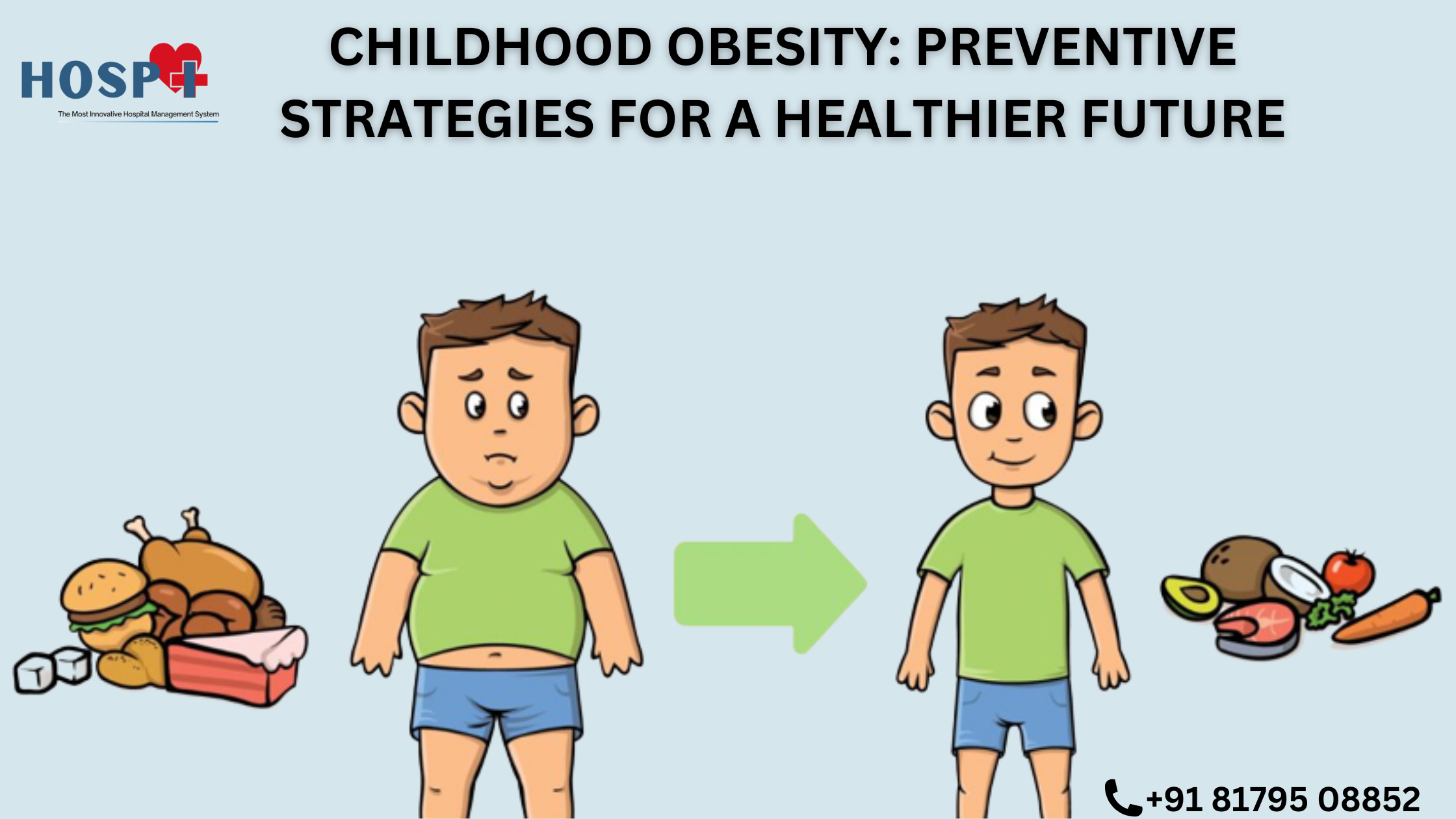Childhood obesity has become a significant public health concern, with its prevalence reaching alarming rates worldwide. This condition, characterized by excess body weight in children and adolescents, not only affects their physical health but also poses long-term risks for various chronic diseases. Understanding the causes, consequences, and effective prevention measures is crucial for addressing this growing issue. This article aims to provide a comprehensive overview of childhood obesity, exploring its definition, prevalence, risk factors, health implications, and various prevention and treatment strategies. By delving into the multifaceted aspects of childhood obesity, we can strive towards healthier futures for our children and promote a society that nurtures their overall well-being.
- Definition of Childhood Obesity
Childhood obesity is defined as having excess body fat that negatively impacts a child’s health. It is determined by measuring a child’s body mass index (BMI), which takes into account their height and weight. If a child’s BMI is at or over the 95th percentile for kids their age and sex, they are deemed obese.
- Prevalence and Trends
Childhood obesity has become a global health concern as its prevalence continues to rise worldwide. According to the World Health Organization, the number of overweight or obese children under the age of five is estimated to be over 41 million. In many countries, the prevalence of childhood obesity has doubled or even tripled in the past few decades. This alarming trend calls for immediate attention and action.
Causes and Risk Factors of Childhood Obesity
Understanding the causes and risk factors of childhood obesity is essential in developing effective prevention and treatment strategies.
- Genetic Factors
Genetics play a role in a child’s susceptibility to obesity. If a child has parents or close family members who are obese, they are more likely to develop the condition themselves. However, genetics are not the sole determinant, and lifestyle factors still play a significant role.
- Environmental Factors
The environment in which children grow up greatly influences their risk of obesity. Factors such as easy access to unhealthy food options, limited opportunities for physical activity, and sedentary behaviors (such as excessive screen time) contribute to the development of obesity.
- Lifestyle Factors
Unhealthy lifestyle habits, such as poor dietary choices and lack of physical activity, are major contributors to childhood obesity. Consuming sugary drinks, fast food, and processed snacks, combined with a sedentary lifestyle, can lead to weight gain and obesity.
Consequences and Health Implications of Childhood Obesity
Childhood obesity has numerous health consequences and implications that extend beyond physical health.
- Physical Health Consequences
Obese children are at a higher risk of developing various physical health problems, including type 2 diabetes, high blood pressure, heart disease, and joint problems. They may also experience sleep apnea and develop breathing difficulties.
- Psychological and Social Impacts
Childhood obesity can have a significant impact on a child’s mental and emotional well-being. Obese children may face social stigmatization, low self-esteem, and increased risk of depression and anxiety. They may also encounter difficulties in interpersonal relationships and face bullying or teasing.
- Long-term Health Risks
Obesity in childhood often continues into adulthood, increasing the risk of developing chronic health conditions such as type 2 diabetes, certain types of cancer, and cardiovascular diseases. Long-term health risks emphasize the importance of early intervention and prevention strategies.
Prevention Strategies for Childhood Obesity
Preventing childhood obesity requires a comprehensive approach that addresses various aspects of a child’s life.
- Promoting Healthy Eating Habits
Encouraging a balanced and nutritious diet is crucial in preventing obesity. This involves providing children with healthy food options, limiting sugary and processed foods, and promoting the consumption of fruits, vegetables, whole grains, and lean proteins.
- Encouraging Physical Activity
You must perform frequent physical activity if you want to maintain a healthy weight. Encouraging children to engage in active play, sports, and other forms of exercise helps burn calories and build strength. Limiting sedentary activities, such as excessive screen time, is also important.
- Creating Supportive Environments
Creating supportive environments at home, school, and in the community is vital for fighting childhood obesity. This includes promoting healthy eating in school cafeterias, providing opportunities for physical activity during school hours, and educating parents and caregivers on healthy habits. Collaboration between healthcare professionals, educators, and policymakers is necessary to implement effective prevention strategies.
By addressing the causes, understanding the consequences, and implementing prevention strategies, we can make significant progress in combating childhood obesity and improving the health and well-being of our children. Let’s work together to create a healthier future for the next generation.
Nutritional Interventions for Childhood Obesity
- Balanced and Nutrient-Dense Diet
When it comes to combating childhood obesity, a balanced and nutrient-dense diet is key. This means providing children with a variety of wholesome foods that are rich in essential nutrients while limiting their intake of processed and sugary treats. Think of it as giving them a colorful plate full of veggies, fruits, whole grains, lean proteins, and healthy fats, with the occasional splurge on their favorite treats. Finding a balance between nourishment and enjoyment is the secret sauce here.
- Portion Control and Meal Planning
Portion control is like the superhero guardian of childhood obesity prevention. Teaching kids to recognize appropriate portion sizes and listen to their body’s hunger and fullness cues sets them up for a healthier relationship with food. Meal planning can also be a game-changer, as it allows families to make conscious choices about what goes on their plates. Plus, it can save time and money, making it a win-win situation for everyone involved.
- Addressing Food Insecurity
While we talk about balanced diets and portion control, it’s essential to address the issue of food insecurity. Many families struggle to access nutritious food due to financial constraints or limited availability. Addressing food insecurity means implementing strategies that ensure all children have access to affordable, healthy food options. It’s a collective effort that involves governments, communities, and individuals coming together to make a difference.
Physical Activity and Exercise Recommendations for Childhood Obesity
- Types of Physical Activities
In the battle against childhood obesity, physical activity swoops in as a formidable ally. Encouraging children to engage in a mix of aerobic activities, such as running, swimming, or dancing, as well as muscle-strengthening exercises like push-ups or climbing, can help them maintain a healthy weight and boost their overall well-being. It’s all about finding activities that excite them and make them want to put those extra calories to good use.
- Exercise Guidelines for Different Age Groups
Just like superheroes have different powers, children of different age groups have varying physical abilities. Tailoring exercise guidelines to each age group ensures that children are getting the right amount and intensity of physical activity suitable for their stage of development. From crawling babies to energetic teenagers, there’s a spectrum of activities that can be adapted to their unique needs, making exercise more enjoyable and effective.
- Engaging Families and Communities
Fighting childhood obesity is a team effort that requires the involvement of families and communities. Encouraging parents and caregivers to be active role models and setting up support systems within communities can create an environment that prioritizes physical activity. From organizing community sports events to promoting active transportation, there are endless possibilities to foster a culture that values movement and makes it a natural part of everyday life.
Psychosocial Support and Behavioral Interventions for Childhood Obesity
- Addressing Emotional Factors and Body Image
Childhood obesity isn’t just about physical health; it’s also essential to acknowledge and address the emotional factors that can contribute to it. Helping children build a positive body image, fostering self-esteem, and providing emotional support can empower them to make healthier choices and navigate the challenges of weight management with resilience and confidence.
- Behavior Modification Techniques
Sometimes, a little behavior modification can go a long way. Simple strategies like setting goals, tracking progress, and rewarding positive behaviors can create a toolbox of techniques that support children in their journey towards a healthier lifestyle. By making small, manageable changes and celebrating achievements, behavior modification techniques can transform health goals into achievable missions.
- Family-based Approaches
The family unit holds immense power when it comes to tackling childhood obesity. Implementing family-based approaches means involving parents, siblings, and even extended family members in creating a supportive environment for healthy living. From cooking nutritious meals together to engaging in physical activities as a family, these approaches strengthen bonds while encouraging healthy behaviors for everyone involved.
Medical Approaches and Treatment Options for Childhood Obesity
- Medical Assessment and Diagnosis
A comic book hero needs a trusted sidekick, and in the case of childhood obesity, that sidekick is medical assessment and diagnosis. Professionals use a combination of measurements, such as body mass index (BMI) and medical history, to assess and diagnose the condition. This evaluation helps determine the appropriate treatment approach and identifies any underlying medical conditions that may require attention.
- Medication and Surgical Interventions
While medication and surgical interventions are not the first line of defense against childhood obesity, they can play a role in specific cases where other strategies haven’t yielded desired results. These interventions are usually reserved for severe cases or when there are significant health risks involved. However, it’s important to remember that they are not a standalone solution and should always be combined with lifestyle changes.
- Multidisciplinary Team Approach
Just like the Avengers assemble to save the day, a multidisciplinary team of healthcare professionals, including doctors, nutritionists, psychologists, and physical therapists, can join forces to create an integrated approach for the prevention and treatment of childhood obesity. This collaboration ensures that all aspects of a child’s health are addressed, providing comprehensive care and support for both the child and their family.In conclusion, addressing childhood obesity requires a multifaceted approach that encompasses education, intervention, and support from various stakeholders including families, schools, healthcare professionals, and policymakers. By implementing effective prevention strategies, promoting healthy lifestyles, and providing adequate support systems, we can work towards reducing the prevalence of childhood obesity and its associated health risks. Together, let us prioritize the well-being of our children and empower them to lead healthy, active lives. By doing so, we can create a brighter and healthier future for the generations to come.
To read some more articles like this, Visit this site: https://hospi.info/blog
Search more here: https://www.google.com/
FAQ
1. What is considered childhood obesity?
Childhood obesity is defined as having excess body weight for a child’s age and height. It is typically determined by calculating the body mass index (BMI) percentile, which takes into account the child’s age and gender. A BMI percentile at or above the 95th percentile is generally considered indicative of obesity in children.
2. What are the long-term health risks associated with childhood obesity?
Childhood obesity can significantly increase the risk of developing various chronic conditions later in life, including cardiovascular diseases, type 2 diabetes, high blood pressure, and certain types of cancer. It can also have adverse effects on bone and joint health, as well as mental health, leading to depression, low self-esteem, and body image issues.
3. Are genetic factors solely responsible for childhood obesity?
While genetic factors can contribute to a child’s susceptibility to obesity, they do not solely determine the development of obesity. Environmental factors, such as sedentary lifestyles, unhealthy dietary habits, and limited access to nutritious foods, play a significant role. The complex interaction between genetics, environment, and lifestyle factors ultimately contributes to the development of childhood obesity.
4. What can parents and caregivers do to prevent childhood obesity?
Parents and caregivers play a crucial role in preventing childhood obesity. They can promote healthy eating habits by offering a balanced and nutrient-dense diet, encouraging regular physical activity, limiting screen time, and providing a supportive and positive environment. Additionally, involving the whole family in healthy lifestyle choices and being positive role models can contribute to preventing and managing childhood obesity.



